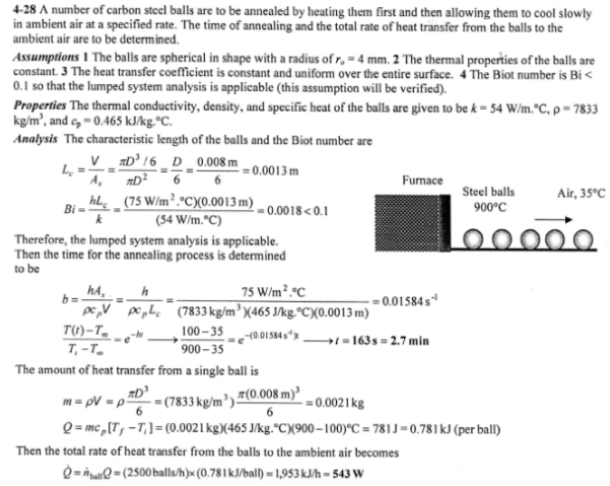Carbon steel balls (rho=7833 kg/m^3, k=54 W/mK, c_p=0.465 kJ/kg C, and alpha=1.474x10^-6 m^2/s) 8 mm in diameter are annealed by heating them first to 900 C in a furnace and then allowing them to cool slowly to 100 C in ambient air at 35 C. If the average heat transfer coefficient is 75 W/m^2 K, determine how long the annealing process will take. If 2500 balls are to be annealed per hour, determine the total rate of heat transfer from the balls to the ambient air.

Carbon steel balls (rho=7833 kg/m^3, k=54 W/mK, c_p=0.465 kJ/kg C, and alpha=1.474x10^-6 m^2/s) 8 mm in diameter are annealed by heating them first to 900 C in a furnace and then allowing them to cool slowly to 100 C in ambient air at 35 C. If the average heat transfer coefficient is 75 W/m^2 K, determine how long the annealing process will take. If 2500 balls are to be annealed per hour, determine the total rate of heat transfer from the balls to the ambient air.
